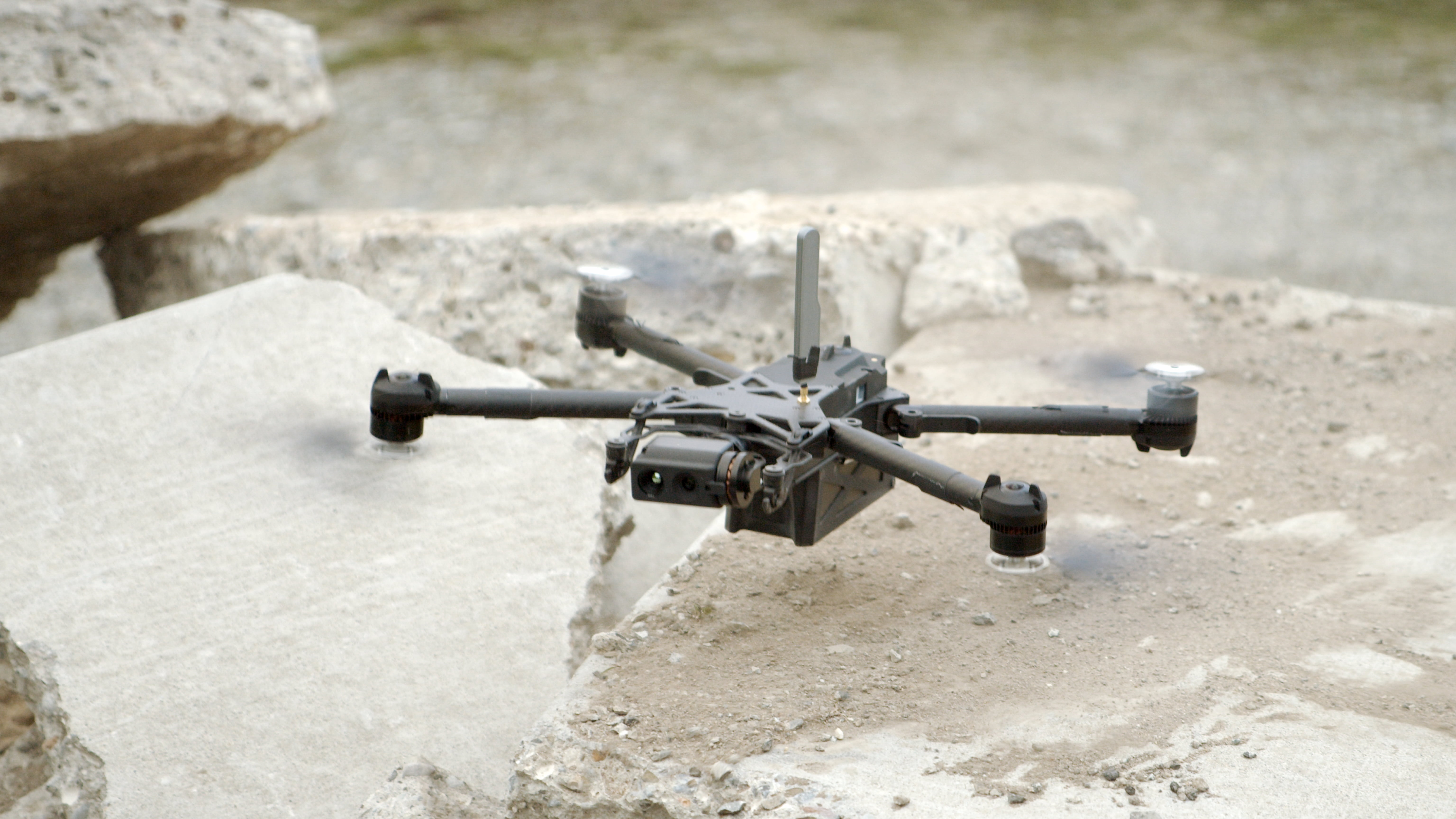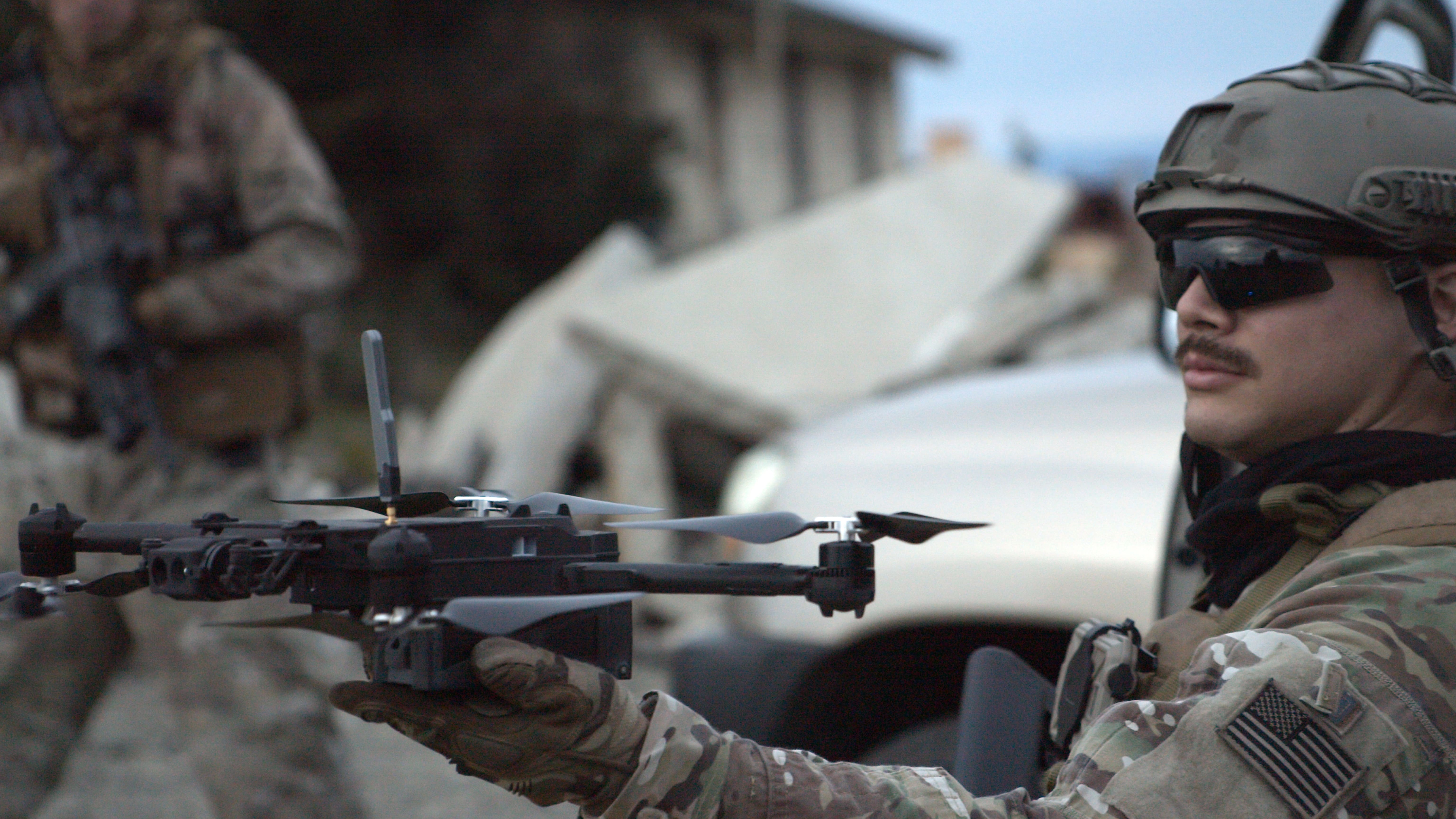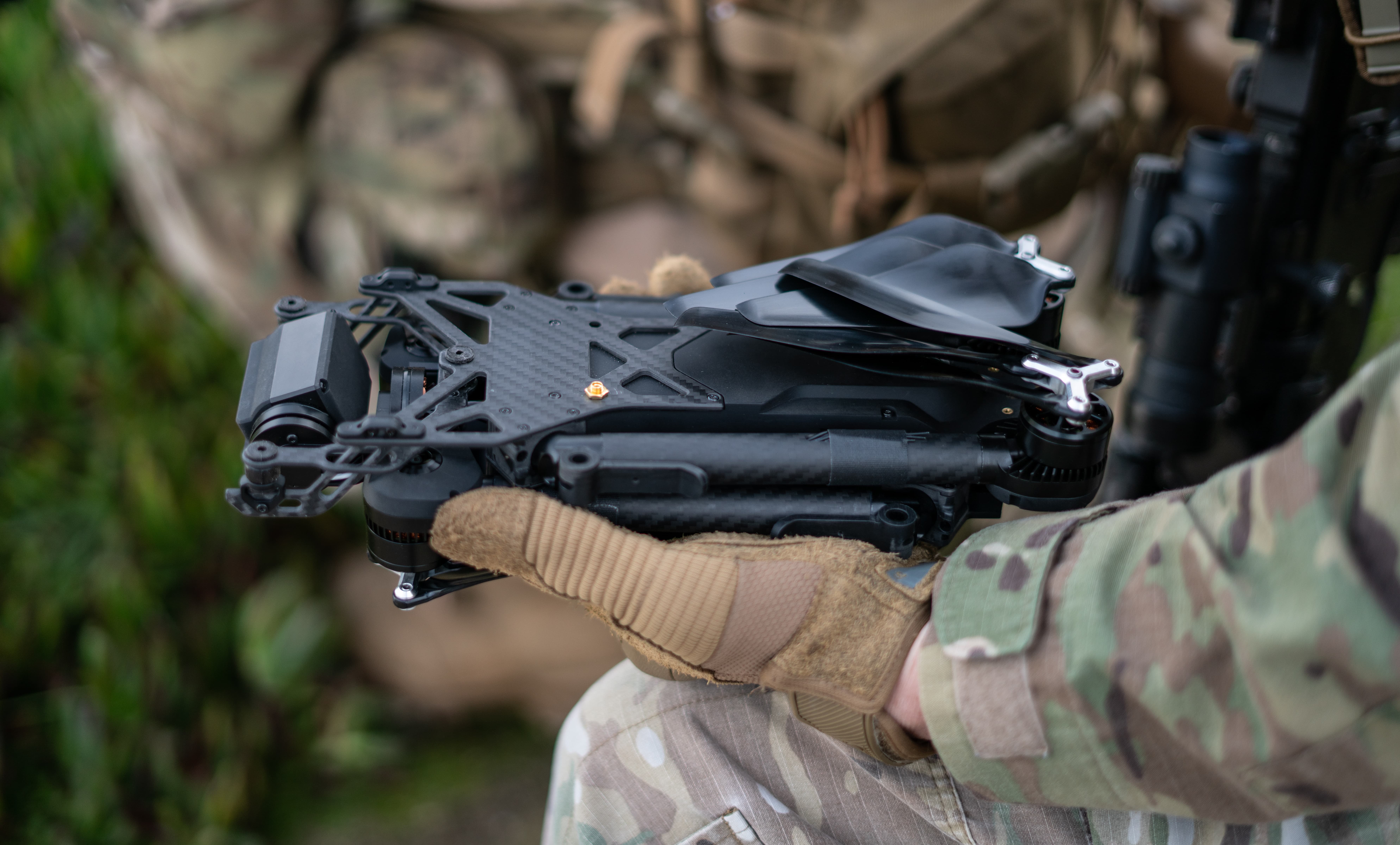
US drone manufacturer Skydio has teamed up with a company known for advanced fabrication techniques to implement “Additive Molding” – described as a “breakthrough carbon fiber manufacturing technology.” According to a news release, this technique will mean Skydio’s X2 drone will be lighter, stronger, and capable of flying longer distances.
Carbon fiber and other composite materials are the gold standard when it comes to building products that are both strong and light. So it’s not a leap to suggest that any significant advances in manufacturing techniques for products built using composite materials will further enhance said product. That, in a nutshell, is what Skydio says will be the result of its partnership with Arris Composites, resulting in further improvements to the Skydio X2 series of drones that will start shipping soon.
Let’s take a look at the implications.
Additive Molding
Arris Composites, which recently closed $48.5M in Series B funding to continue the company’s expansion into Southeast Asia and the US, invented and holds a patent on the process. It’s a way of mass-producing even complex parts while ensuring that the composite fibers are always aligned with stress vectors, resulting in the strongest final product possible. It’s also an automated process, allowing for manufacturing at scale.

The process involves three key steps, which we’re taking directly from the Arris Composites web site:
- Preforming / Composite shaping: Continuous dry fiber is impregnated with thermoplastic resin and then shaped to comprise a section of the final part. These shapes have continuous composite fibers aligned with the part’s 3D stress-vectors.
- 3D-Aligned Preform Assembly: All shapes and components are assembled into a final assembly.
- Mold Processing: Final processing of assembly locks in ideal performance, accuracy, surface quality, and part-to-part repeatability.
What does that look like?
Glad you asked. Here’s a graphic outlining the process, again from the Arris Composites web site. It really helped us understand how it all works:

What does all this mean for the Skydio X2 drones?
Skydio’s news release describes several “game-changing advantages.” They include:
• Strength and stiffness of titanium at a fraction of the weight, enabling the Skydio X2 to increase range, and speed
• Optimized carbon and glass fiber layout based on functional requirements of individual regions of the airframe
• Scalable US-based manufacturing and innovation to bring peak aerospace performance at lower cost
An Arris “first”
This is the first time Arris has applied its technology to the UAV world. The technique has both companies optimistic about the implications:
We are excited about the value that our partnership with Arris will bring to our customers. At Skydio, we pursue cutting edge innovation across all facets of drone technology. The unique properties of Arris’s Additive Molding carbon fiber allows us to optimize the strength, weight, and radio signal transparency of the Skydio X2 airframe to deliver a highly reliable solution that meets the needs of demanding enterprise, public safety and defense use-cases.
Adam Bry, Skydio CEO.
The CEO of Arris Composites shares that outlook:
The evolution of aerospace design has been punctuated by breakthroughs in manufacturing and materials. Such a moment has come where manufacturing of optimized structures has converged with composite materials ideals to unlock previously impossible, high-performance aerospace designs. While we’re working with leading aerospace manufacturers to improve aircraft performance, sustainability and costs; Skydio’s culture and market have enabled an unsurpassed pace of innovation that has fast-tracked this transformation to deliver the next-generation of aerostructures. It’s simply amazing to see such a revolutionary product broadly available and flying today.
Ethan Escowitz, founder and CEO of Arris
More on the Skydio X2
The Skydio X2 series of drones are made to carry out demanding jobs in demanding environments. The foldable airframe deploys quickly and the drone can carry out flights lasting up to 35 minutes. Because of the Additive Molding technique, the X2 drones will include a “newly designed core structural element.” The manufacturing technique means the X2 will include a single carbon fiber component with the same structural results “that would have otherwise required 17 parts.”

The Skydio X2 already features impressive brains. The Additive Molding from Arris Composites will, according to the release, contribute significantly to its brawn.
All while reducing its weight – a critical factor for any drone.
FTC: We use income earning auto affiliate links. More.







Comments